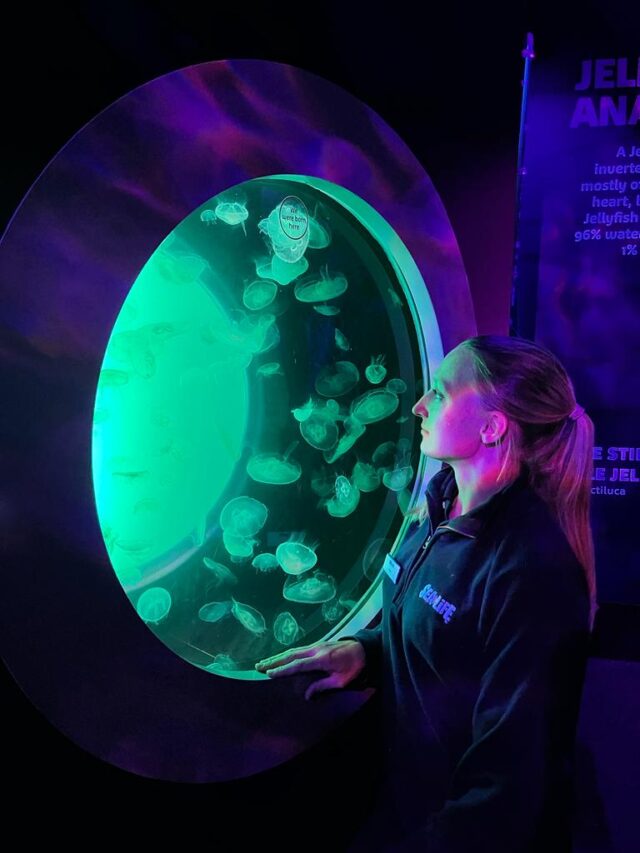It’s time for a jell-abration at SEA LIFE, as aquariums across the country receive healthy jellyfish thanks to the amazing work of SEA LIFE Scarborough’s successful breeding programme.
Due to the successful breeding programme at SEA LIFE Scarborough, the aquarium has bred over 2,000 jellyfish including 1,100 Moon jellyfish, 1,000 Umbrella jellyfish and 160 Upside down jellyfish, with 500 jellyfish currently living on site.
Jellyfish have been living in our oceans for over 500 million years, which means they are the oldest multi-organ animal to exist. They are made up of 95-98% water and do not have brains; instead, they have nerve nets which sense changes in the environment and coordinate the animal’s response.
Their name is slightly misleading, as jellyfish are in face not fish at all, they are classified as Cnidarins. The bell, the main part of the jellyfish’s body, pulsates to drive them through the water, trailing their stinging tentacles behind them for catching prey.
SEA LIFE centres across the UK are home to a number of different breeds of jellyfish, from the largest of all jellyfish ‘Lion’s Mane’ to ‘Box Jellyfish’ who are notorious for having an extremely painful sting that can be fatal to humans.
Amy German, Jellyfish Supervisor at SEA LIFE Scarborough, said: “Over the past month we have been working hard to bring a new feel to our jellyfish area and expand the breeding facilities behind the scenes. The area now has 5 jellyfish displays ranging from the strange tropical upside-down jellyfish to our native moon jellyfish.
“At Scarborough SEA LIFE we breed jellyfish for aquariums all over the country. Behind the scenes in the jelly lab there are hundreds of baby jellyfish being grown and looked after in our 9 custom built tanks. In the past year we have sent out over 2,500 jellyfish to other aquariums. Jellyfish have a complex lifecycle which is challenging to replicate in captivity so breeding jellies is no easy task. Going forward we are hoping to breed some different species of jellyfish too so watch this space.”




